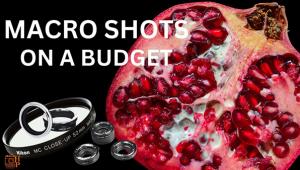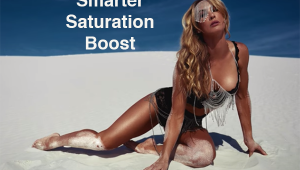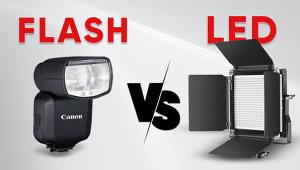Digital Help
Q&A For Digital Photography
| This department will attempt to provide solutions to problems readers may have getting into and using digital cameras, scanning, and using digital photographic images with a computer and different kinds of software. All questions sent to me will be answered with the most appropriate information I can access and provide. However, not all questions and answers will appear in this department. Readers can send questions to me addressed to Shutterbug magazine, through the Shutterbug web site, directly via e-mail to: editorial@shutterbug.net or fotografx@mindspring.com or by US Mail to: PO Box 2830, Lompoc, CA 93438. The Mac Vs. PC Debate
Continues A.
First of all, your assumption a Mac costs more is incorrect. To obtain
equal graphics performance and component quality (like the same video
card) the same quality of RAM chips, etc., etc., the PC will cost you
more. If you want to compare prices for equal quality and performance
of a Mac G4 or G5 you have to select one of the PC workstations made
specifically for graphics, and the price is usually higher than for
a Mac. A.
It has been a few years since processing speed has been a significant
issue, even to someone like myself with years of full-time experience.
Even an inexpensive eMac is more than fast enough working in Photoshop
so I never have to wait for it, except maybe when processing 250MB 48-bit
files, and then it is just a few seconds pause to apply a process like
a Hue/Saturation adjustment, not even enough time to take a break. Locked Files--How
To Unlock A.
If you are using Mac OS X open the folder with the files on your desktop,
then with Finder active click on the File menu and select Get Info,
then in the General tab you can uncheck Locked. (Note to readers: In
the future when you have questions like this please specify what Operating
System you are using.) Using Studio Electronic
Flash With Digital Cameras A. Yes,
you can use your Nikon 5700 with your studio electronic flash system.
The camera must be set on manual exposure mode, and the built-in flash
system including flash TTL exposure control must be turned off. Please
read the instructions for external flash in your manual, or consult
Nikon's technical support. Comparing Apples
And Oranges A.
I am afraid you are asking me to compare apples and oranges. The Microtek
ArtixScan 1800f is one of the best letter-size flat-bed scanners in
the consumer market, but even so, scanning a 1x1.5" film image
with a linear array sensor about 8.5" in length is stretching
the capabilities. Nevertheless, the 1800f will scan a 35mm film frame
that is capable of producing a pretty decent 11x14" print. Ink Jet Vs. Dye Sub
Printers A.
Ten years ago about the only printers that would reproduce a photograph
with any degree of fidelity were dye sub printers. Today, among the
serious photographers I know personally, only one is using a dye sub.
There is only a limited selection of dye sub printers in the consumer
market, and most of those are snapshot-sized models. A letter-size dye
sub printer is considerably more expensive than the best photo quality
6-7 color photo ink jet, and the media and inks for a dye sub are also
much more expensive per print than a photo quality ink jet. In addition,
there is very little choice of media available for dye sub printers,
while there is a very wide range of paper selections of all types available
for ink jets. Then there is the issue of print life, and pigment ink
photo 6-7 color ink jets provide near archival life and the dye subs
do not. Glossy Ink Jet Paper
And Pigment Ink Printers A.
The Premium Professional Glossy Paper that is made for the Epson Stylus
Photo 2200 printer and other Epson Pro printers which use pigment inks
is made for a limited purpose, which is to provide the printing and
publishing industry a "press" emulated proofing medium for
CMYK output for offset printing. It is not really intended for the purpose
of producing display prints of photographic images. And, the Epson Premium
Glossy Paper you might buy at a computer or photo outlet is really formulated
for dye ink Epson printers, not the pigment ink 2200. So, in either
case you may not obtain either the best paper/printer profile performance
or ideal paper/ink compatibility compared to what you can expect in
prints made with the other media made for the 2200 like Watercolor,
Premium Luster, or Enhanced Matte. |
- Log in or register to post comments


































